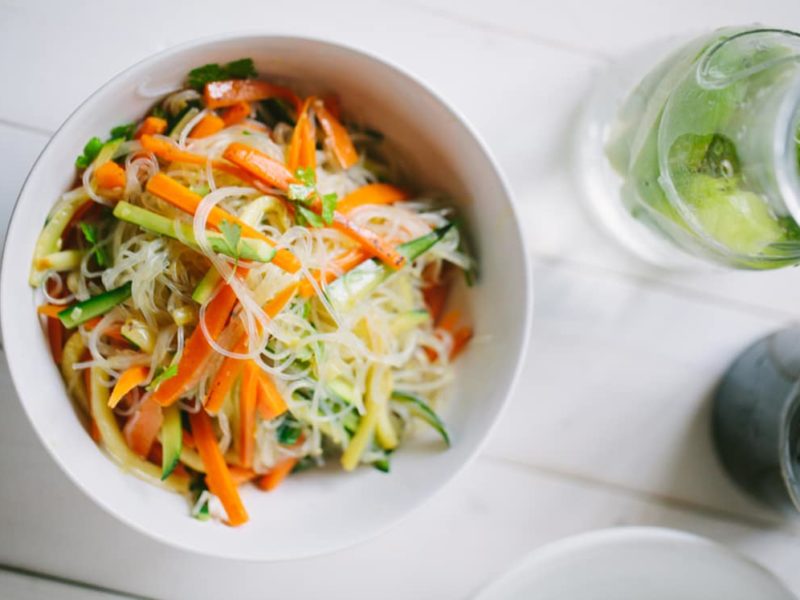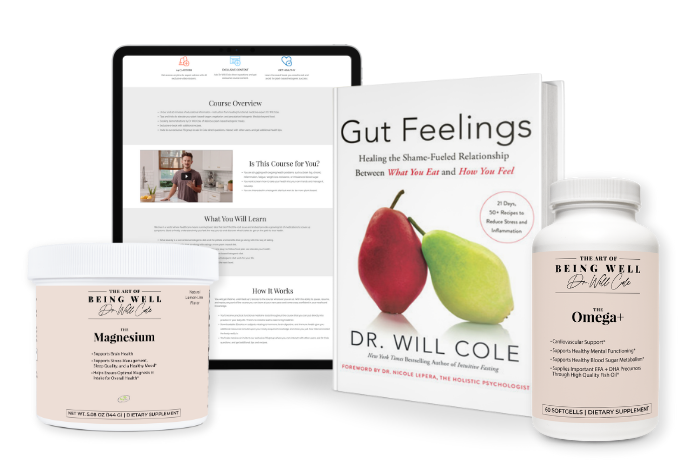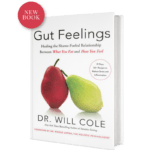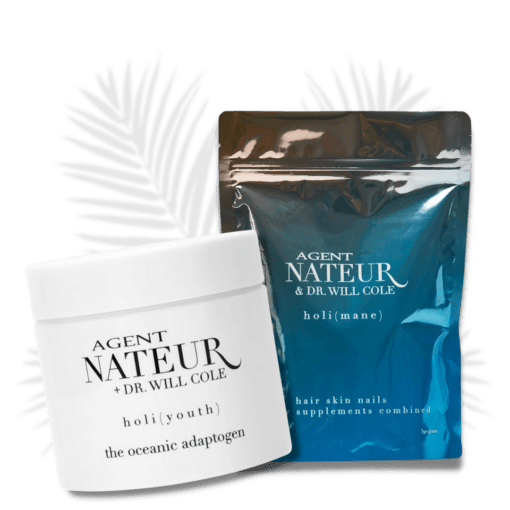Vitamin Sea: The Top Oceanic Superfoods

We live on a planet covered by water. About 70 percent of the Earth’s surface is underwater and our climate, not to mention the health of all living species, are intimately connected to the ocean. Half the oxygen we breathe is produced by sea vegetation, so why not look to the sea for health remedies that don’t exist on land? Here is my guide for tapping into the power of the sea for next-level healing.
Spirulina + Blue-Green Algae
Spirulina and other blue-green algae live in lakes – both fresh and saltwater – throughout the world. Blue-green algae was a traditional remedy and highly revered food in ancient civilizations, especially in Mexico and Africa. Today, they have been powdered and packaged for your convenience, with all the health benefits. (Find them at your local health food store.)
What they can do for you: Spirulina is jam-packed with tons of benefits; it contains three times the protein of beef and all nine essential amino acids (the ones your body can’t make and you need to get from food). Spirulina also has more calcium than milk and its chlorophyll content makes it super detoxifying.
How to use them: It’s blue-green algae that gives those weird-looking mermaid and unicorn lattes from that famous coffee chain their brilliant aquatic hues. You thought those were artificial dyes? Even that sugar-laden unicorn frap took advantage of spirulina to get its beautiful color. Try mixing a teaspoon or two of blue-green algae into your own healthy elixirs, teas, and smoothies. I bet you can make something just as artistic and a whole lot healthier. Check out some of my favorite recipes here.
ARTICLE CONTINUES BELOW
Make Your Life a Cleanse
SUBSCRIBER-ONLY GUIDES FOR GUT HEALTH, VIBRANT ENERGY, HEALTHY FOOD & CLEAN ALCOHOL
Get FREE access to these + giveaways, recipes, & discount codes in personal emails from Dr. Will Cole.
Sea Vegetables
Technically a type of algae, sea vegetables have always been an exotic delicacy in island cultures from Asia to New Zealand to Ireland. Get to know hijiki, nori, kombu, arame, kelp, dulse, Irish moss, and alaria esculenta, each with its unique taste, look, and texture.
What they can do for you: Talk about a great source of minerals! Sea vegetables are full of (1) B vitamins, vitamin C, vitamin K, magnesium, and 18 different amino acids, and they are one of the most effective ways to get the ultra-important mineral iodine, which your body needs to manufacture your thyroid hormones. Sea vegetables also contain anti-inflammatory compounds called fucans that have been shown (2) to improve blood sugar balance in type-2 diabetics.
How to use them: Soak sea vegetables and cut them into strips for your soup. Sprinkle flakes into your salad. Use sheets as wraps for your favorite veggies and fish, or blend them into smoothies. They give a briny, exotic, complex, and fascinating taste to anything you make.
Pearl
Yes, actual pearl, the gift of oysters and a secret of Asian medicine for generations. Crushed to a fine powder for use in skin care products and dietary supplements, pearl is a glamorous beauty secret.
What it can do for you: Pearl is an oceanic adaptogen rich in calcium, magnesium, amino acids, and a variety of minerals. It has been used for its calming and mood-regulating effects as well as being a super beauty food for more radiant skin.
How to use it: Pearl has a mild taste, so it goes great in just about everything. I use a teaspoon in smoothies and elixirs, but you can even put it in some healthy baked goods! No one will ever suspect your secret ingredient.
Marine Phytoplankton
This microalgae is considered the most important plant in the world because it provides earth with over 90 percent of its oxygen – more than all the forests in the world combined! But marine phytoplankton is not only an important source of oxygen; it’s a critical food source for ocean life and humans, too.
What it does for you: There are very few foods on this Earth that provide the raw materials for our bodies to make new cells and sustain the ones we have, but marine phytoplankton is one of them. It contains all nine amino acids that the body cannot make on its own, along with the essential omega fats; vitamins A, C, a variety of B vitamins; and trace minerals. Think of it as the most pure and potent food possible for your cells.
How to use it: Unless you’re going to wade around the ocean scooping up microalgae in bags of cheesecloth, the best way to get phytoplankton is through supplementation.
Sea Salt
Salt is actually a superfood – if it comes from our most pristine oceans. Nothing like conventional table salt, sea salt is mostly unprocessed and rich with minerals. Beautiful red Hawaiian sea salt comes from volcanic rock, Italian sea salt is harvested off the Mediterranean coast of Sicily, and the beautiful pink Himalayan sea salt so popular in health food stores these days is harvested from ancient seabeds, originally formed from marine fossil deposits over 250 million years ago.
What it does for you: These different salts contain a wide variety of minerals that aid in optimal immune, hormone, and electrolyte balance.
How to use it: Use these superfood salts like you would use any salt – sprinkled on food for a fuller and more satisfying flavor. You can also simulate a dip in the sea by adding sea salt to your bath. Just pour two cups of one of these salts into your bath and soak up the healing properties straight through your skin. It may be a little pricey to do this, but it’s way cheaper than a trip to Hawaii!
Krill Oil
Krill are tiny crustaceans found in every ocean, and there are more of these little guys on the planet than any other creature! Imagine picking any species – even humans – and putting them all together on a scale. All the krill would weigh more!
What they do for you: Most of us are lacking healthy fats, specifically omega-3s, which contribute to health problems like depression, heart disease, arthritis, and inflammation. Krill oil is superior in many ways to conventional fish oil. It contains 50 times more of the powerful antioxidant astaxanthin, along with beneficial phospholipids phosphatidylcholine and phosphatidylserine that you need for optimal cellular, hormone, brain, and nerve health.
How to use it: Krill oil is usually sold in capsules. Take them, like any supplement, according to package instructions. I’m a big fan of Neptune krill oil (NKO) and take it daily for two reasons: first, it’s one of the most nutrient-dense kinds of krill oil, and second, I think anything with the word “Neptune” in front of it sounds cool.
Wild-Caught Seafood
Fish caught straight out of the ocean (rather than raised on a fish farm) have high omega-3 fats. If you choose wild-caught salmon, sardines, rainbow trout, Atlantic mackerel, and shellfish like mussels and oysters – that are rated by the Environmental Working Group as having lower mercury levels and higher sustainability – you will get the most benefit. Avoid those with higher toxin levels, like king mackerel, marlin, orange roughy, shark, swordfish, and tilefish.
What it does for you: As with krill oil, wild-caught fish have the brain-, hormone-, heart-, and immune-supporting omega-3 fats – but in delicious whole-food form, so they also include a wider variety of nutrients, minerals, and fats that can’t be encapsulated in a pill.
How to use them: There are so many ways to enjoy fish, I couldn’t possibly list them all here. Personally, I am partial to fish tacos, with lettuce or cassava flour wraps to keep them grain-free.
Marine Collagen
Putting grass-fed collagen powder in lattes and coffee is definitely a health trend, but one lesser-known collagen option is marine collagen from wild-caught fish.
What it does for you: One of the cleanest, most bioavailable sources of protein, marine collagen is also a great way to support the growth and maintenance of healthy skin, hair, and joints. Rich in glycine, collagen is also great for supporting optimal gut and immune health.
How to use it: Most marine collagen comes in powdered form. Add a scoop to your favorite almond or coconut milk latte.
Magnesium Salt
The ancient Zechstein Sea – a geological formation in Northern Europe – is rich with magnesium salt that has been protected, deep within the Sechstein Seabed at a depth of 2,000 meters beneath the Earth’s crust, from the toxins of our modern world. What a find!
What it does for you: Magnesium is responsible for the function of hundreds of different biochemical pathways in your body. Your hormones, brain, and heart depend on optimal magnesium levels, and most of us are deficient!
How to use it: My favorite way to get this type of magnesium is from magnesium oil spray. This is one of the most bioavailable ways to ensure optimal magnesium levels. Spray it on, rub it in, and feel the serenity.
Dulse
Dulse is a type of red algae that grows on the northern coasts of the Pacific and Atlantic oceans. It’s commonly used in Ireland and Iceland to cook with and snack on, but we aren’t so familiar with it here. Let’s change that! In addition to its iodine content, it’s an excellent source of protein.
How to use it: Purchase dulse in powdered form to use just like a spice – it can flavor all your savory dishes, from soup to pizza. You can also add a pinch or two to your morning smoothie for a first-thing iodine boost.
Kombu
This edible kelp is cultivated in Japan and Korea. It is the single greatest source of iodine out of all the sea vegetables, so definitely audition it for a role in your regular diet.
How to use it: Since it’s pretty chewy, it’s not great to eat on its own, but it can add a deep briny flavor to soups and is a common ingredient in Japanese soup stock and broth. Typically you buy chunks of it, cutting off and soaking the pieces. You can also buy it powdered to add to smoothies, soups, or your other culinary creations.
Kelp
Kelp’s iodine levels are sky-high, with some varieties having up to 2,984 micrograms it has the highest iodine content of any sea vegetable. It’s also a rich source of magnesium, and since many of us are also magnesium-deficient, kelp can solve two problems in one delicious dose.
How to use it: Dried kelp flakes are crunchy, salty little pieces of yum. Add them to salads for crunch, soups for flavor, or to garnish any savory dish that needs something extra special. You might also try kelp noodles, a yummy and easy-to-eat form of this sea vegetable.
Nori
This type of seaweed is probably what you’re most familiar with, as it’s used to wrap sushi rolls. But did you know you can eat it without the sushi, or use it for other things, like wraps for veggies and fish? It comes in dried sheets that are also delicious for snacking on their own, or look for roasted snack versions cut in smaller pieces.
How to use it: Buy these nori sheets and make yourself some delicious sushi or wraps! Add in some of your favorite seafood, avocado, cucumber, and cauliflower rice, wrap it up and enjoy! Perfect for a quick snack or on-the-go lunch, these are great dipped in some coconut aminos.
Irish moss
Not actually a moss, this seaweed is another variety of red algae commonly found along the Atlantic coast of North America and Europe, and is commonly consumed in (how did you guess?) Ireland. It has a rubbery/leathery texture so it may seem inedible, but it is high not just in iodine but also in potassium, and makes a great thickening agent in cooking.
How to use it: Best soaked in liquid, it can then be chopped up and added to soups or broths. The water left behind takes on a gel-like quality which is great for thickening foods like sauces or soup.
Arame
This is a species of brown algae kelp mostly found in Japan and commonly sold dried.
How to use it: Milder and sweeter than many other sea vegetables, arame is a great additive to any food because you won’t necessarily taste it. Soak it in water and add it to anything, even baked goods.
Other benefits of sea vegetables
I’ve already touched on some of the additional benefits from sea vegetables beyond iodine – you have lots of other reasons to love them. Just a few more benefits: Spirulina, dulse, and Irish moss are great plant sources of iron, which is also important for the production of thyroid peroxidase (3) – the enzyme used to make healthy thyroid hormones. Nori is rich in B vitamins, which are much-needed for methylation and opening up your body’s detox pathways.
As more people begin to appreciate the wonders of sea vegetables, demand will increase and so will availability. Even now, you no longer have to go to a specialty store to find them. Whole Foods and similar stores carry many varieties, and they are also easily purchased online from places like Amazon. Before buying, the one thing to remember is to buy reputable brands that source their products sustainably. If you are getting sea vegetables from a contaminated water source containing toxins or other chemicals, the sea vegetables will be contaminated as well. Thankfully, the U.S. Food and Drug Administration has very high standards for the commercial sea vegetables it imports.
Iodine supplements versus sea vegetables
Maybe despite my glowing recommendations, the idea of eating seaweeds still turns you off. Can’t you just take an iodine supplement? In addition to missing out on all of the other important nutrients and the synergistic magic of real food you would get from sea vegetables, iodine pills are not a good option for people with thyroid problems. This is very important to understand because health professionals often say “take iodine” for a natural solution to thyroid problems, but iodine supplements could actually trigger an autoimmune response toward the thyroid. While you do need iodine for thyroid hormone production, several studies have found that increased iodine intake is associated with (4) Hashimoto’s disease.
Research has also found (5) that an increase in thyroid antibodies is associated with iodine supplementation. This is why I much prefer getting a balanced source of iodine with all of the other uber-important nutrients in its natural form: seaweed. For autoimmune thyroid cases, I also suggest limiting kelp in particular, because of its higher iodine content. Instead, try some of the other varieties for a milder dose of natural iodine. We are all different. Even with healthy foods, what works for one person may not be right for you.
Want to add some seaweed to your diet but aren’t sure where to start? Try this delicious soup recipe, featuring several different varieties.
Sea Vegetable Whitefish Soup
Ingredients
- 2 pieces of kombu (roughly 3-inch squares)
- 1 cup lightly packed bonito flakes
- 4 cups water
- 2 to 6 ounces tilapia or cod fillets
- 1 lb. kelp noodles
- 2 tablespoons coconut aminos
- 1 tablespoon coconut water vinegar
- 4 cups loosely packed greens
Directions
Place kombu and bonito in water in a large pot and bring to a boil. Reduce heat and simmer for 10 minutes. Meanwhile, chop greens and cut the fish into 1 to 2-inch cubes. Cook kelp noodles as per directions on package. Pour broth through a strainer lined with cheesecloth to remove bonito and kombu. Return the broth to the heat and add coconut aminos and coconut water vinegar. Add the fish and simmer for 5 minutes or until fish is cooked through. If you are using tougher greens – such as bok choy, cabbage, snow peas, or kale – add them at the same time as the fish. For more tender greens – such as spinach, chard, or beet greens – add them after the fish is cooked and simmer one minute to wilt. Add the kelp noodles and simmer.
As one of the first functional medicine telehealth clinics in the world, we provide webcam health consultations for people around the globe.
Photo: Stocksy
Start Your Health Journey Today
FUNCTIONAL MEDICINE CONSULTATIONS FOR PEOPLE AROUND THE WORLD
References:
- Rajapakse N, Kim SK. Nutritional and digestive health benefits of seaweed. Adv Food Nutr Res. 2011;64:17‐28. doi:10.1016/B978-0-12-387669-0.00002-8
- Kim MS, Kim JY, Choi WH, Lee SS. Effects of seaweed supplementation on blood glucose concentration, lipid profile, and antioxidant enzyme activities in patients with type 2 diabetes mellitus. Nutr Res Pract. 2008;2(2):62‐67. doi:10.4162/nrp.2008.2.2.62
- Zimmermann MB, Köhrle J. The impact of iron and selenium deficiencies on iodine and thyroid metabolism: biochemistry and relevance to public health. Thyroid. 2002;12(10):867‐878. doi:10.1089/105072502761016494
- Sun X, Shan Z, Teng W. Effects of increased iodine intake on thyroid disorders. Endocrinol Metab (Seoul). 2014;29(3):240‐247. doi:10.3803/EnM.2014.29.3.240
- Boukis MA, Koutras DA, Souvatzoglou A, Evangelopoulou A, Vrontakis M, Moulopoulos SD. Thyroid hormone and immunological studies in endemic goiter. J Clin Endocrinol Metab. 1983;57(4):859‐862. doi:10.1210/jcem-57-4-859
View More At Our Store
Purchase personally curated supplements
and Dr. Will Cole’s books!

The information on this website has not been evaluated by the Food & Drug Administration or any other medical body. We do not aim to diagnose, treat, cure or prevent any illness or disease. Information is shared for educational purposes only. You must consult your doctor before acting on any content on this website, especially if you are pregnant, nursing, taking medication, or have a medical condition.
Our content may include products that have been independently chosen and recommended by Dr. Will Cole and our editors. If you purchase something mentioned in this article, we may earn a small commission.

BY DR. WILL COLE
Dr. Will Cole, DNM, IFMCP, DC is a leading functional medicine expert who consults people around the globe, starting one of the first functional medicine telehealth centers in the world. Named one of the top 50 functional and integrative doctors in the nation, Dr. Will Cole provides a functional medicine approach for thyroid issues, autoimmune conditions, hormonal imbalances, digestive disorders, and brain problems. He is also the host of the popular The Art of Being Well podcast and the New York Times bestselling author of Intuitive Fasting, Ketotarian, Gut Feelings, and The Inflammation Spectrum.

Gut Feelings
Healing The Shame-Fueled Relationship
Between What You Eat And How You Feel

